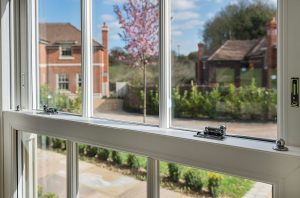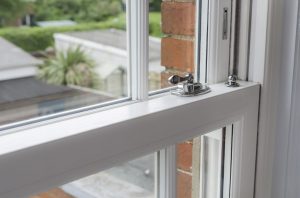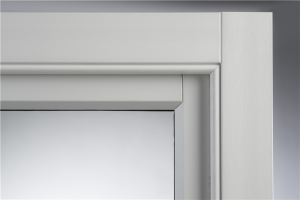Masterframe Trade
HERITAGE GUIDANCE PROMPTS HIGHER STANDARDS
WHEN IT COMES TO HERITAGE AND CONSERVATION EVERY LOCAL AUTHORITY IN THIS COUNTRY HAS A DIFFERENT OPINION AND THEREFORE DIFFERENT GUIDE LINES, AS TO WHAT IS PERMITTED IN THEIR AREA AND WHAT THEIR POLICY IS REGARDING REPLACEMENT WINDOWS, ALAN BURGESS OF MASTERFRAME WRITES;
Every local authority in this country has a different opinion and therefore guidance, on what is permitted in their area and what their policy is regarding replacement windows.
Not only do they have different guidance, Planning officers change jobs, so policies either change as frequently as the staff or become tablets of stone but nobody quite remembers why!
Understandably, planning officers want to maintain the character of the street scene, the design element has gone unregulated for the majority of homes, with consumers often driving decisions based on price alone. Hence the complete mis-mash of fenestration evident in every town in the UK.
To prevent the uncontrolled spread of “inappropriate double glazing” the local authorities are extending the number of conservation areas, and especially Article 4 listed properties, thus ensuring more control can be leveraged on future replacements.
Many will be unhappy with this development, but professional companies shouldn’t be providing the authorities use these powers wisely and their decisions are based upon design not materials.
The issue is that most planning departments take their lead from English Heritage or Historic Scotland. These are fine organisations, but they have a different brief. Their role is about the preservation of buildings, those with important historic heritage and we support their work restoring our nations heritage.
It is totally logical that because most historic buildings used timber in their original construction that timber be used when replica windows are required, if maintenance isn’t an option. But this “materials” directive cannot be the driver for a modest application of mid terrace property that happens to be in a conservation area.
Retail customers are often afraid to go against the instructions of a planner and yet what few realise is that planners advice can legitimately be ignored in certain circumstances. For instance, providing a home is occupied by a single family, is not rented nor a block of flats, and has no commercials activity, then in most conservation areas, planners advice is something that can be ignored if wished.
Many appeal the decisions of planners however I understand that 70% of cases are won by planners. Yet our network of sash window installers are yet to lose an appeal!
One recent case illustrates the strength of the argument. A mid terrace property in a conservation area, had narrow aluminum inserts, tiny fan lights and large fixed panes fitted into the old box frames. Neighbours mostly had PVC casements, although one did still have original box sash windows.
Could the installer remove the awful, 1970’s ali fixed lights for authentic PVCu box sash windows?……NO, even though the road was littered with PVC casements.
It was obvious the existing windows were death traps, occupants would have no chance of escape should a fire break out, there wasn’t any ventilation to speak of, and cleaning was totally impossible. When the council were made aware that in rejecting the application for suitable sash window replacements, they may be liable because they have prevented the replacements being installed, they soon changed their mind!
Now they are installed the neighbourhood is vastly improved and the street scene enhanced.
The council now prefer, the very window they earlier rejected!
Our network of installers have dozens of article 4 cases where planning was overturned on appeal because the windows “improved the area”,or they were “indistinguishable from the timber originals”, that “blended with the surrounds” so well, that the council lost the case and ordinary people (long suffering homeowners that just want to enjoy energy efficient, secure windows) get the new sash windows they wanted, without anyone else noticing they have been changed!
Planners often dislike and object a specific material, that’s wrong (unless its is poisonous like lead pipes for drinking water). Their role is to ensure the quality of a development, the character of an area. Their decisions should be based upon the style of opening, the design of the windows and the detail of their construction.
This way installers and manufacturers have a clear choice,
- Invest in the machinery, extrusions and skills to overcome the logical objections and produce something that is “indistinguishable” (not my words but the words of an inspector working for the ODPM) and that retains the character of the building and surrounding environment.
- Stay away from conservation areas.
Conservation areas are here to stay and getting ever more powerful especially with the spread of Article 4 areas. Providing planners direct that power towards appropriate window styles and designs, that reinstates the original character of the property, then professional replacement window companies who specialise is the very best products have nothing to be worried about.
Thankfully, the days when inappropriate fixed pane glazing, could be slapped into beautiful homes in conservation areas should be over, except for a few companies who take no regard of peoples homes or regulations.




